Kia Niro arrives from $41,990 as a hybrid; EV to cost $67,490
Kia has finally entered the electric vehicle race in Australia with its new Niro SUV.
More than that, the Korean car maker will also sell a hybrid and plug-in hybrid version of the compact SUV, giving it a potential rival to the Toyota RAV4 Hybrid and all manner of EVs such as the Nissan Leaf, Mazda MX-30 and Hyundai Kona Electric.
Despite its broad spread – the only other car on the market with the choice of hybrid, PHEV and EV is the Ioniq from sister brand Hyundai – Kia is expecting the Niro to be a niche player. Sales forecasts are for about 100 per month – 70 hybrid, 10 PHEV and 20 EV – making it the most exclusive vehicle in a Kia showroom.
Blame prices for that one.
READ MORE: Kia Niro Electric review
READ MORE: Kia Niro review: Does a Hybrid or Plug-in Hybrid make sense?

The Niro starts at $41,990 plus on-road costs and goes to $70,990 for the top-shelf EV. By small SUV standards it’s not cheap, although the sales pitch is on eco-friendliness rather than budget motoring.
Plus, the Niro won’t be around for long, at least in its current guise.
By mid-2022 this new Niro will be phased out, presumably to be replaced by an all-new model.
That’s because this is the earliest Kia Australia could get its hands on a car that has been hot property in some markets.
Kia Niro: Meet the family
Despite estimates of about 100 sales per month, the Niro arrives as a broad family.
As well as the three drivetrain options – Hybrid, PHEV and EV – each will be offered as a base model S or better equipped Sport.
So there are six variants in total.
Niro S models get an 8.0-inch infotainment screen, alloy wheels, partial leather trim, three USB charge points, digital radio tuning, auto emergency braking (AEB), adaptive cruise control, driver attention monitor, auto headlights and auto wipers. Those base models also get wireless Apple CarPlay and Android Auto.
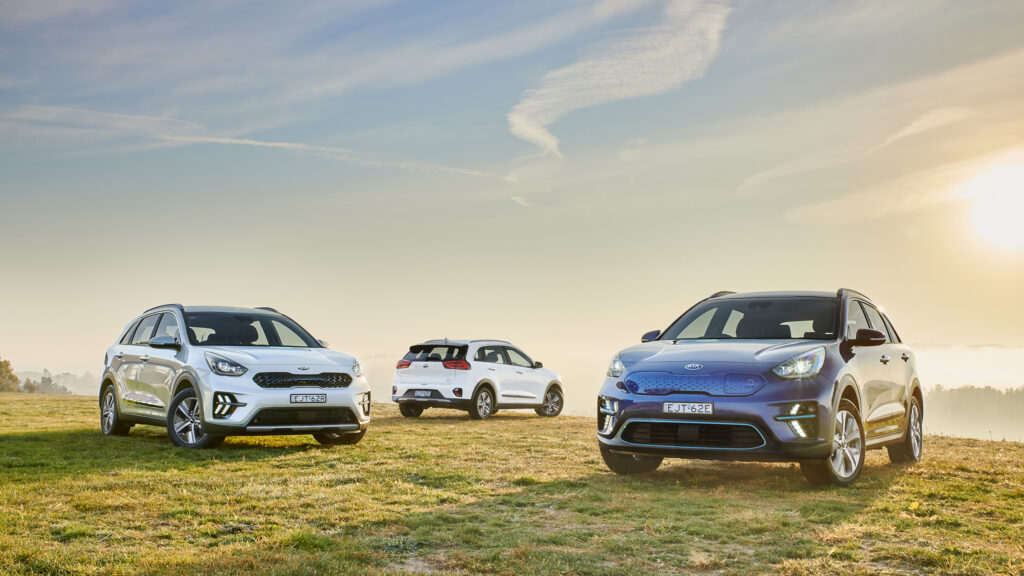
But no blind spot warning or rear cross traffic alert.
Those are two features reserved for the Sport, which also gets dual-zone ventilation (for hybrid and PHEV models only), LED headlights, alloy pedals, shifter paddles on the steering wheel, satellite-navigation, a larger 10.25-inch infotainment screen and fake leather trim.
The Sport model also loses the wireless Apple CarPlay and Android Auto functionality, dropping back to a wired connection (yes, it’s an odd move, but it’s due to a dispute Hyundai and Kia are having with the tech giants about sat-nav functionality with the wireless systems).
There are other equipment quirks for individual models – either hybrid, PHEV or EV – which we’ll detail in the sections below.
Niro Hybrid: From $41,990
The Niro Hybrid gets a 1.6-litre four-cylinder engine with 77kW (77.2kW, to be precise) and 147Nm powering the front wheels. It’s assisted by a 32kW/170Nm electric motor that takes the combined outputs to 104kW/265Nm.
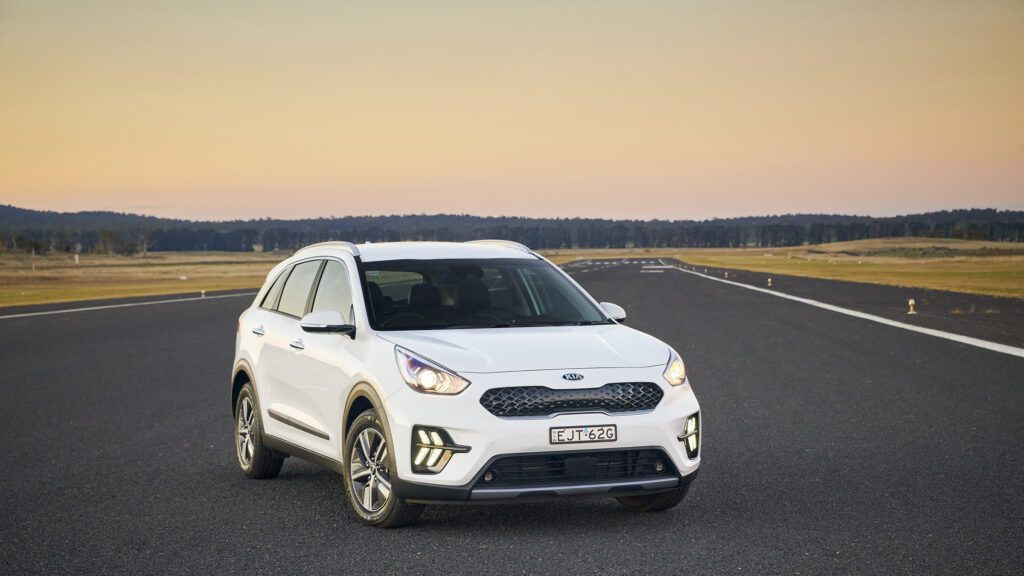
Like all regular hybrids – and all Toyota hybrids – the Niro Hybrid cannot be externally charging, relying purely on petrol for propulsion. Kia mentioned “self-charging” a few times when referencing the hybrid setup, but as we’ve pointed out previously, self-charging is a misleading phrase. Here’s hoping that’s not unleashed to baffle buyers!
Claimed fuel use is 3.8 litres per 100km for the S and 4.4L/100km for the Sport, the latter collecting 18-inch wheels that add to the look and handling but clearly take their toll on fuel economy.
In true hybrid style there’s very little difference between the city and highway fuel use; the official fuel claim for city running (or “extra-urban” as the Australian government describes it) is 3.9L/100km for S and 4.5L/100km for the Sport.
There’s a 1.56kWh lithium-ion polymer battery (by comparison the RAV4 Hybrid gets a 1.59kWh nickel-metal hydride battery).
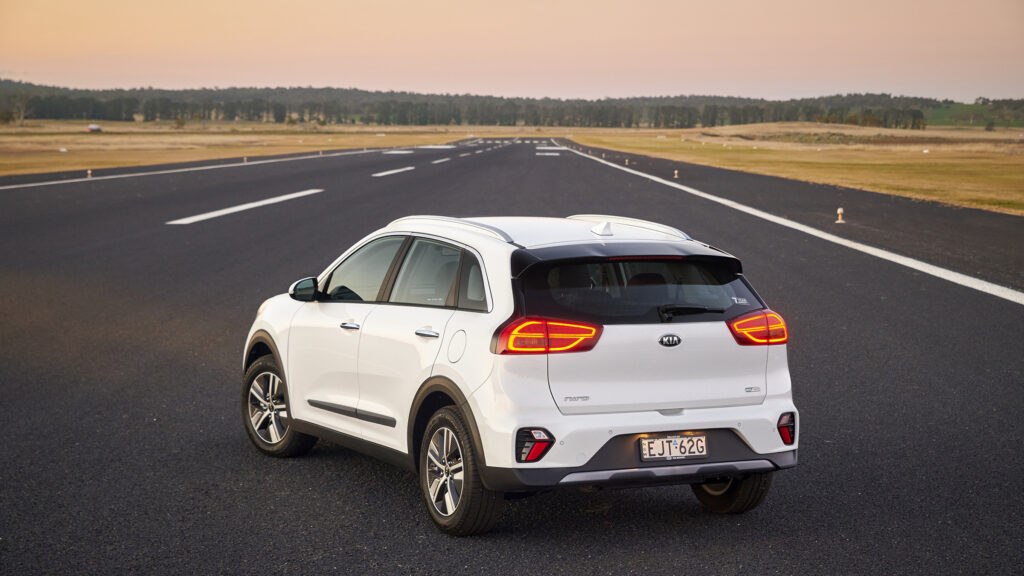
The Niro S Hybrid is priced from $41,990 drive-away and the Niro Sport Hybrid from $45,990. They’re the only Niro variants to get a spare tyre, albeit a space saver.
While Kia sees the Niro Hybrid as a contender against the RAV4 Hybrid, its price will limit its appeal. After all, the RAV4 Hybrid is bigger and more powerful and with more standard equipment, which is no doubt why Kia is forecasting modest sales for the Niro.
Kia Niro Hybrid (HEV) specifications
Price: $41,990 (S), $45,990 (Sport)
Drivetrain: 1.6-litre 4-cyl, 32kW/170Nm electric motor
Power/torque: 104kW/265Nm
Fuel use: 3.8L/100km (S), 4.4L/100km (Sport)
Luggage capacity: 410L
Niro PHEV: From $46,590
The Niro plug-in hybrid – or PHEV – uses the same 1.6-litre four-cylinder engine and electric motor as the regular hybrid listed above.
But it gets a larger battery pack (8.9kWh) that in turn allows the electric motor to up its peak power to 44.5kW, albeit with the same 170Nm of torque.
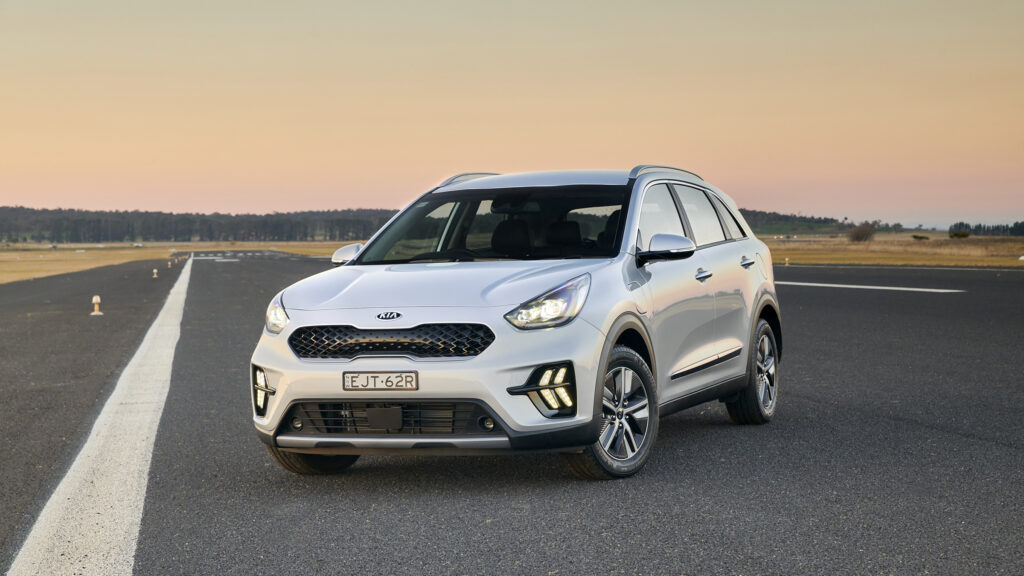
Combined outputs are identical to the hybrid, at 104kW and 265Nm.
More power from the electric motor means it can produce more under electricity alone.
Speaking of which, the Niro PHEV is claimed to travel up to 58km on electricity, but that’s using the less accurate NEDC measurement system. There’s no WLTP figure, but expect it to be south of 50km.
Charging the 8.9kWh battery is done only with AC outlets at a maximum rate of 3.3kW. A full charge using a wallbox will take 2 hours, 45 minutes. Or if you’re using a household 2.3kW powerpoint it’ll take about four hours to charge.
Fuel use is claimed at 1.3L/100km, although as with all PHEVs that’s a largely unachievable figure. For all-electric running you’ll use no fuel, but expect to use plenty more once you call on the petrol engine for more performance or to extend the driving range.
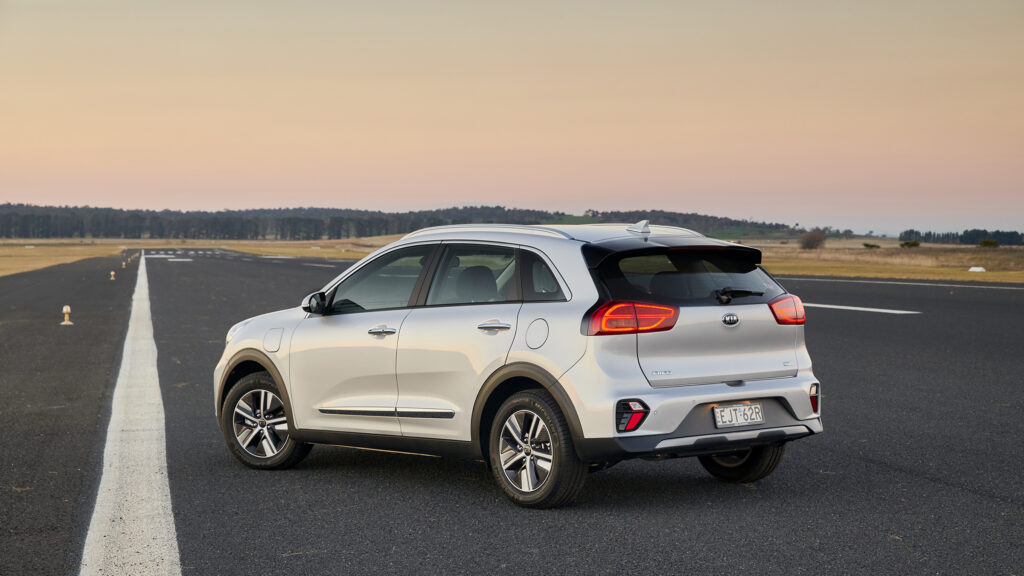
The PHEV also has the smallest boot of the Niro trio. That larger battery takes up boot space, which reduces capacity to 324L.
Equipment levels are mostly the same as for the other variants, although the Sport PHEV picks up interior mood lighting and smart key entry that allows you to leave your key in your pocket.
Kia Niro Plug-in Hybrid (PHEV) specifications
Price: $46,590 (S), $50,490 (Sport)
Drivetrain: 1.6-litre 4-cyl, 44.5kW/170Nm electric motor
Power/torque: 104kW/265Nm
Charging: 3.3kW AC
Fuel use: 1.3L/100km (S and Sport)
Luggage capacity: 324L
Niro Electric: from $67,490
It’s called the e-Niro in some overseas markets, but for Australia Kia is playing it straight, simply referring to the all-electric model as the Niro Electric.
It’s priced from $67,490 for the S model or $70,990 for the Sport.
A single electric motor drives the front wheels, providing 150kW and 395Nm.
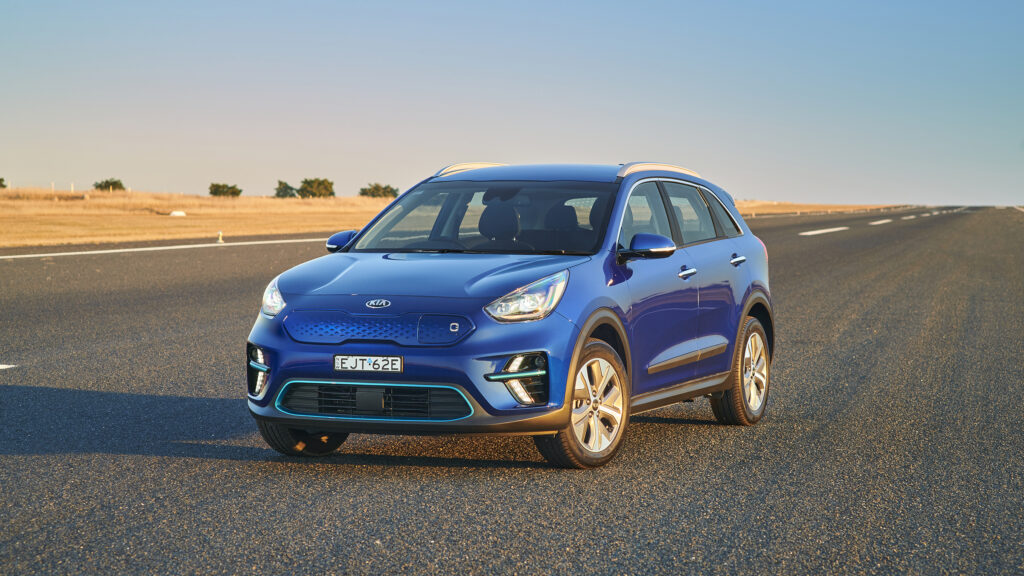
The claimed range is 455km according to the more realistic WLTP measurement.
Charging can be done via AC plugs and wallboxes, with the car accepting up to 7.2kW for a full charge in about nine-and-a-half hours.
The Niro Electric can also fast charge using a DC charger to take up to 100kW, enough for a 0-80 percent charge in a claimed 54 minutes.
As for equipment quirks, both Niro Electrics come with smart key entry and a unique grille that closes off much of the air flow up front. There are also “electric blue” highlights splashed around the exterior and a colour reserved for the electric; it’s called Yacht Blue.
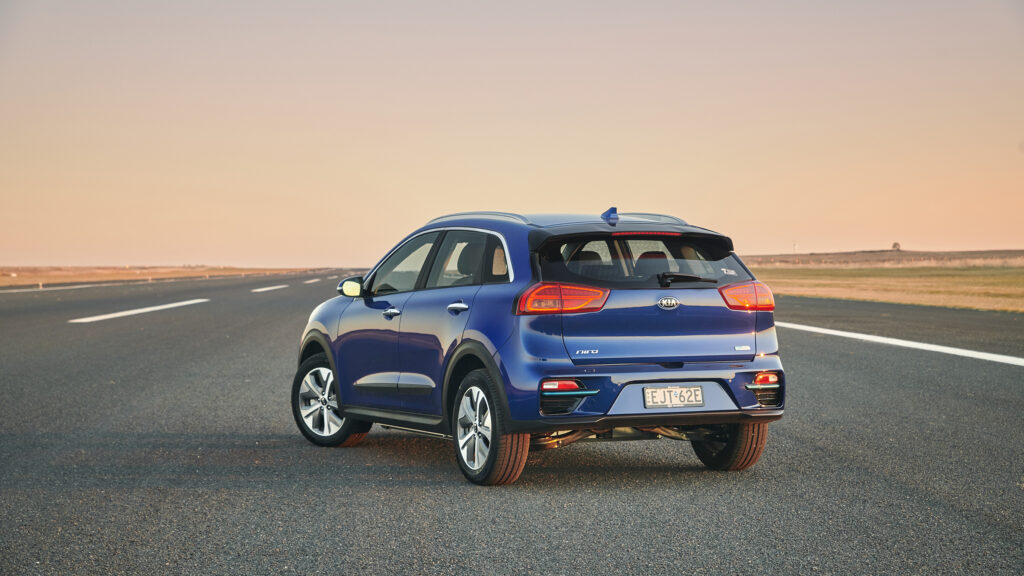
But the ventilation system is single zone only and the shift paddles on the steering wheel adjust the level of regenerative braking rather than change gears.
As for boot capacity, with batteries spread through the floor – the floor in the rear seat is marginally higher than other models – and under the boot it allows for the largest load area of the lot, at 454 litres.
Kia Niro Electric (EV) specifications
Price: $67,490 (S), $70,990 (Sport)
Drivetrain: single electric motor driving the front wheels
Power/torque: 150kW/395Nm
Charging: 7.2kW AC, 100kW DC
Electricity use: 15.9kWh/100km (S and Sport)
Luggage capacity: 451L

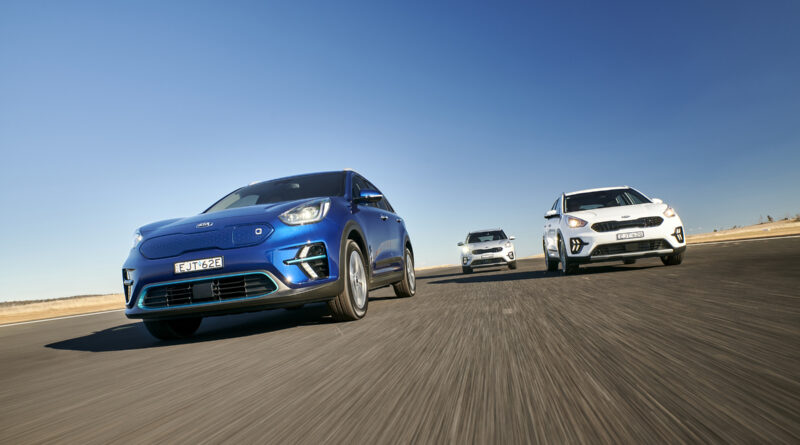
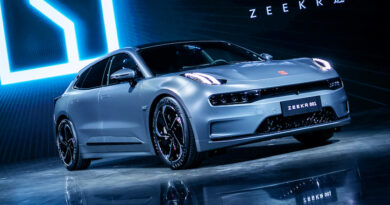
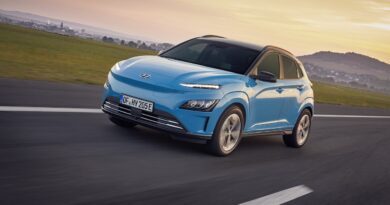
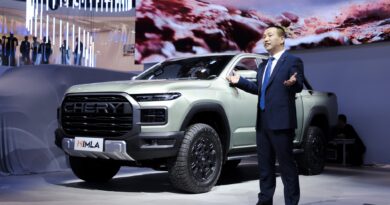
Gee, those prices are exorbitant for an old model EV. It appears with a Federal Government being anti-EV car importers, apart from MG, cannot be bothered or by lack of supply, able to price their EVs competitively. With the “Sport” priced at over $70000, I shudder to think how much the forthcoming EV6 will cost.